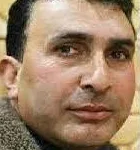According to the study published in the Journal Science Direct titled Chemokines in Triple Negative Breast Cancer Heterogeneity: New Challenges for Clinical Implications conducted by Manzoor Ahmed Mir et al highlighted, “A defining feature of cancer and a major contributor to treatment resistance is tumor heterogeneity. Triple-negative breast cancer (TNBC) is the most aggressive subtype of breast cancer, making up about 15% to 20% of all cases. It has a wide range of characteristics, including the ability to spread to other sites and respond well to treatment. From a molecular to a pathologic to a clinical perspective, it is a very heterogeneous disease. Compared to other breast cancer subtypes, TNBC has a significantly higher chance of recurrence and a lower overall survival rate after diagnosis”. What set the alarm bells ringing is that Kashmir has the second highest prevalence of triple-negative breast cancer, which is around 33 to 35%.
Safeena, a 45-year-old woman from Kupwara, has bravely battled and survived Triple Negative Breast cancer. Last year in June, “ I woke up in the morning and went for a bath and I experienced a lump in my Breast. The next day I promptly visited the local hospital for a check-up. The doctors recommended an ultrasound and Fine Needle Aspiration Cytology (FNAC ) test and I anxiously awaited the results. When I got a call from the Lab after three days, I was shocked and my body started to shiver. When they disclosed that it’s Breast Cancer the news left me shaken and tearful.”
“I was feeling perfectly fine, with no pain or discomfort whatsoever. However, when the test results arrived, the hospital staff were astonished. Consequently, the doctors referred me to SKIMS in Soura for further evaluation and additional tests. Twenty days later, I received the final results: Stage 1.2 triple-negative breast cancer. When I heard the words “Triple Negative Breast Cancer,” I felt like my world had come crashing down, and for a moment, I thought my life was over.”Safeena said.
Safeena underwent a successful surgery at SKIMS in Soura. “Alhamdulillah, my surgery was a success. The doctors were incredibly kind and professional. Throughout the process, my family was always on my mind, especially my children. Thankfully, their unwavering support gives me renewed hope for a healthy new chapter in my life.” The mastectomy was followed by chemo and radiation therapy. While Safeena has fully recovered from Triple Negative Breast Cancer, its Jolt still reverberates in her life.
Present Condition
At the Government Medical College, Srinagar, the Study published in the Journal of International Journal of Research in Medical Science documented 84 cases of breast cancer, including every subtype, have been confirmed. With a mean age of 45.5±8.58, the majority of patients in these cases were in their 4th or 5th decade of life. Of them, 50% had a T2 stage, followed by 19.04% with a T4 stage, 16.66% with a T1 stage, and 14.28% with a T3 stage. 32.1% of patients had nodal status N0, 25.0% had nodal status N3, 23.80% had nodal status N1, and 19.04% had nodal disease N2.52.38% of patients had stage II, 36.90% had stage III, and 4.76% had stage IV. Invasive ductal carcinoma accounted for 85.71% of cases, invasive lobular carcinoma for 9.52%, and medullary carcinoma for 4.76%. Of the patients, 23.80% had Triple + status, 27.38% had Triple Negative status, and 25.0% had ER+/PR+ status.
The study further unveiled that women between the ages of 41 and 50 had a higher risk of breast cancer. Stage III came next in order of precedence. Within histology, invasive ductal carcinoma was the most prevalent form. In these patients, triple negativity was more prevalent.
Dr. Manzoor Ahmed Mir, Senior Assistant Professor Head/ Coordinator of the Department of Bioresources, University of Kashmir, said, “If we talk about the specific type of breast cancer which is triple-negative breast cancer. It is the most heterogeneous type and it’s having the worst prognosis which means treatment for this is very difficult. The other types of Breast cancer have hormonal therapy available but this type of Breast cancer does not have any of the receptors for these hormones, like estrogen receptor (ER receptor), PR receptor(progesterone receptor), and HER2( Human epidermal receptor). We have many subtypes of breast cancer but this is the worst and has the least prognosis, having heterogeneity, and the most challenging to treat with. So, its prevalence is the second highest in Kashmir.”
Late Marriages
“There is a link between late marriage and Breast Cancer. The Risk factors are; late marriage, if a female doesn’t breastfeed likely to have a risk factor of Breast cancer because Breastfeeding is a prophylactic against Breast Cancer. The early age menstruation and late menopause means that the Hormonal cycle is extended is also a great risk factor,” Dr Fiaz Maqbool Fazili, Senior Consultant Surgeon (Onco-Surgery; Breast) said. “Breast cancer is a hormonal dependent so long if any female is exposed to this hormonal level for a long time it increases the chances of Breast cancer. Breastfeeding has decreased nowadays due to many reasons. However, Breastfeeding is one of the things which have caused a decrease in breast cancer, and if we can make lifestyle modifications, about thirty percent of cancers can be prevented.”
Link between TNBC and Ovarian Cancer
Dr Fiaz said Triple-negative breast cancer has fewer treatment options than other types of invasive breast cancer. This is because the cancer cells do not have the estrogen or progesterone receptors or enough of the HER2 protein to make hormone therapy or targeted HER2 drugs work because hormone therapy and anti-HER2 drugs are not choices for women with triple-negative breast cancer, chemotherapy is often used. If the cancer has not spread to distant sites, surgery is an option. Chemotherapy might be given first to shrink a large tumor, followed by surgery. Chemotherapy is often recommended after surgery to reduce the chances of the cancer coming back. Radiation might also be an option depending on certain features of the tumor and the type of surgery.
“In cases where the cancer has spread to other parts of the body (stage IV), platinum chemotherapy, targeted drugs like a PARP inhibitor or antibody-drug conjugate, or immunotherapy with chemotherapy might be considered. (triple negative means / poor prognosis as hormonal manipulation will not be affected positive for hormone receptors means good response to treatment,” Dr Fazilli said, “Ovarian cancer and breast cancer, both depend on hormones (estrogen hormone – the female hormone) TNEOC; A subtype of ovarian cancer that lacks expression of estrogen receptor, progesterone receptor, and human epidermal growth factor receptor type 2 (HER2). Some researchers believe that a faulty BRCA1 gene may be a possible cause of TNBC and that BRCA1 gene mutations may make the body’s cells susceptible to genetic alterations that can lead to certain types of cancer, including TNBC and ovarian cancer having the same genetic alteration. As per the researchers, Triple negative and ovarian cancer both have the same genetic predisposition.”
Breast Cancer Management in J&K
“We have a State Cancer Institute in our valley at SKIMS, Soura where all the great oncologists are doing great in terms of cancer treatment in Jammu and Kashmir. The first thing is to go for a mammogram,” Dr Manzoor said. “Then FNAC ( Fine Needle Aspiration Cytology) and then there is core biopsy or biopsy if not then along with the FNAC or biopsy and then the ultrasound if that’s not shown there then the MRI (magnetic resonance imaging) that’s also a technique. Then if not there and want to know whether it is metastasized or localized in that particular area, a female diagnosed with Breast Cancer has to go for a CT scan. We have chemotherapeutic centers in SKIMS as well as in GMC also.”
“Molecular testing is also done at SKIMS,” Dr Musaib Mushtaq, Senior Resident Department of Radiation Oncology SKIMS, Srinagar said. “Sometimes, we have to send it outside because when we do the biopsy, we need a second opinion from a different institution. We have a State Cancer Institute, a full-fledged oncological department. However, in the medical field itself; we do not have a lot of clinicians especially when we talk about oncology. If we look at the ratio of patients to doctors, then there is a shortage we need a lot of doctors in this field.”
(Author is currently working as online editor at Rising Kashmir and a recipient of the 2024 REACH MEDIA fellowships for Reporting on Non-Communicable Diseases)








